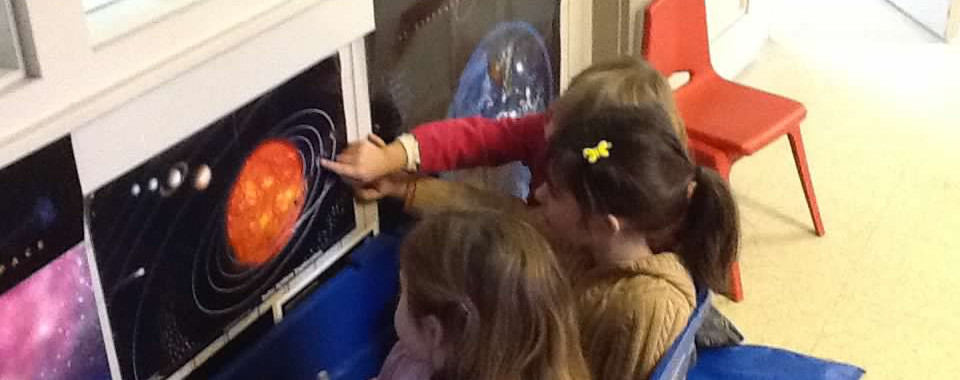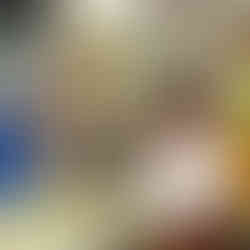Children Are Natural Scientists: Building Powerful Early Childhood Experiences
- Diane Schnoor
- Jan 18, 2023
- 18 min read

Learning through play is the hallmark of Millbrook Community Preschool, an innovative preschool program currently celebrating its 16th year in operation. In this discussion, three of the women who founded and led the preschool during the last 16 years share insights into what makes a powerful early childhood education experience. Play, the arts, literacy, and STEAM are all explored in this conversation with Dr. Diane Jackson Schnoor, Deborah Coconis, and Maureen Sarma. Grab a cup of tea and join us for a warm and inviting reunion as we consider the state of early childhood education today.
Highlights from the episode are included in the blog, but definitely take a listen. [00:47] Introductions
Deborah Coconis is an arts and education professional. She has engaged young children in outdoor activities, visual, and performing arts for over thirty years, teaching in after school programs, preschool, and arts camps. Most recently she served as director of Millbrook Community Preschool at Grace Church in Millbrook, New York, where she also taught for thirteen years. The first several of those were working in collaboration while I was director. Deborah finds inspiration for teaching through literature, music, the nature around us, as well as her own interests and experiences as a visual and performing artist. She is, in turn, motivated by the curiosity, joy, struggles, and discoveries of her students.
Maureen Sarma replaced me when I left the preschool to move to Virginia. Once again, she is in the role of director, guiding the preschool into its next stages. Before MCP, Maureen studied, lived and worked in Ireland for 15 years. She received her B.A. in English Literature from Trinity College Dublin before embarking on a career with the Irish Department of Education and Science. Maureen headed an initiative to support at-risk children and their families in the country.Upon returning to N.Y., Maureen was thrilled to find MCP. She became preschool director in 2012, and throughout the next four years led the school through a period of growth and renewed vision. She conducted a school-wide renovation with the Bruderhof Community, and engendered a view on early learning as intuitive, hands on, and joyful. Additionally, Maureen believes that education needs to be approached through reflection, responsiveness, and compassion. She advocates for slowing down to create space for children to be seen, heard, and to form connections on their own.She is delighted to continue serving MCP as a member of the teaching staff. She finds herself working and laughing beside who she believes to be the warmest, most creative teachers imaginable, and the most wondrously fascinating little ones!
One of the things that makes the preschool stand out is that sense of family, that sense of connection and belonging, and then that sense that they're (the children) capable of so much more than we think they are. -- Dr. Diane
Maureen discovered Millbrook Community Preschool when her family moved back to New York from Ireland. "When it came time for me to look for preschool, I was pottering around the village of Millbrook," she remembers. "My parents lived just outside it. And I bumped into this mother in the library, and she was just talking up Millbrook Community Preschool, and she said, It's just across the road. I can walk you over if you want. I think it's, like, their last day of school. So I did. I dutifully followed her with my daughter in hand. And I was just so thrilled by what I saw because it was your last week of school and you were having a water day in the playground and there were buckets of water and sponges and paddling pools, and the teachers were playing with the kids and everybody was so deliriously happy. And then I was introduced to this lovely, energetic little thing, Diane Schnoor, who took me on a whirlwind tour of the preschool and just said, Are you available Mondays, Wednesdays, and Fridays in the fall? And that was it. I didn't look at anything else. I just fell in love with what was so clearly a nurturing, natural environment for children. It was just a no brainer for me."
Deborah moved to New York from Massachusetts, where she had been teaching after school programs for years and doing theater. After staying home with her son for the first three years of his life, she brought him to visit Millbrook Community Preschool. "I remember my visit to the school when it was circle time, and Ella (my daughter) was a student then," she recalls. "And I remember you showing pictures. She was doing a share, and it was a photograph of her in a production of Annie, and you were in it as well. And I thought, these are my people. And then watching the children do the jump up and down and seeing them each have a moment where they shone. And I just loved that." While her son was a student, Deborah started as an art room volunteer, and soon was asked to join the staff as a part-time teacher.
[06:45] Art in early childhood education (and mini solar systems too)
As an early childhood educator, and as the founder of Millbrook Community Preschool, family involvement and connection was a cornerstone of our philosophy. Part of that was welcoming volunteers to assist where their skill sets shone, whether it was leading music or reading books at circle time, offering dance or physical exercise classes, or providing supplemental art.
I was always in awe of the art that Deborah did with the children. Early on, she showed an amazing ability to build connections between our curriculum, especially science, and meaningful art. I still remember these little mini solar systems Deborah made with the preschoolers. They actually revolved. The talk that went on in the room about the different planets and what they looked like was so rich and inviting. I remember hearing the kids talk about their favorite planets and being an astronaut as they worked with Deborah to make clay planets for a solar system that literally revolved around the sun on, like, little wires. And these are three and four year olds who are making these, but they could tell you what the planets were and they knew exactly what their order was. This is one of Deborah's great gifts.
Building Solar Systems and Connecting Playful Learning and Space Exploration
[07:44] Little Scientists: Building STEM/STEAM connections in preschool. We talk about Jan Brett, art connections, and a year of building hands-on knowledge about habitats and animal classifications. Do YOU know how many bones are in a giraffe's neck? (and a year of habitats and animal classifications). Do you know how many bones are in a giraffe's neck?
My personal happy place as an educator has always been building meaningful connections between science, children's literature, and hands-on explorations (and that was before STEM and STEAM were cool). When I was the director and lead teacher at Millbrook Community Preschool, we were doing STEM/STEAM with young learners, but without the labels.
We were doing it. We were connecting the science and language arts, because I found, for me at least, I love teaching thematically. That's how I had taught elementary school. And so I found they (the preschool children) were super excited to do science if we could connect it back to books like the year that we did Jan Brett and we literally covered all of the windows with murals of each of the habitats. And the kids were comparing and contrasting the animals, and they knew what animals lived in each habitat, and then that kind of dovetailed and snowballed, and it went from the habitats to, well, what's the difference between a mammal and a bird? And then, what's the difference between a bird and an insect? And there was one year that literally they were dividing animals according to classification, and they could tell you what a reptile was, an amphibian, a bird. And I thought, These are my little scientists. And I kind of give young Andrew Osborne all the credit for that, because he is the child who asked me initially how many bones are in a giraffe’s neck? There are seven in case you didn’t know. There are the exact same number of bones in a giraffe's neck as there are in ours. They're just a whole lot bigger. Andrew, he was my push into figuring out that science was an entry point into literacy for so many of my kids. -- Dr. Diane
Exploring Habitats and Animal Classifications Through Hands-On Science and STEM, Literature Connections, and Play
[10:07] Connecting early childhood curriculum to nature and outdoor play to build STEM/STEAM connections and scaffold discovery One of the commonalities we've all shared as a preschool director and teacher is a love of nature and a natural curiosity. Maureen shares her memories of attended a nursery school in Beacon, NY that was magically on the grounds of this cloistered Order of Carmelite nuns. "What impressed upon me the most of my time there was our access to the outdoors and playing," she recalls. "And I talked to Deborah about this so much. I had so many profoundly happy memories from childhood of just being outside with my friends and having elbow room, and there was a pond there, and they gave us nets and we could look for tadpoles, and we brought all of our found objects back into school."
Those happy memories translated into an opportunity for the preschool in the years since I left the area. When they were given the opportunity to renovate the space, Deborah and Maureen drew on the idea of creating a space that truly followed the way children play. "We were very fortunate in that we had this amazing opportunity to renovate the space, and we said, let's try and figure out a way to support this idea of the environment as another teacher," Maureen says. "We gutted and we rebuilt, and we took down walls to give kids more space to play instinctively. And I think that from that, it was a reimagining of what it meant to be a child in a first learning setting. From that, I believe that the STEM stuff flowed so easily, because once we had redone our space, we then thought about how we would connect that outdoor program, and that's where Deborah stepped in and then just took the school in another wonderful direction in terms of nature based play."
Deborah chimes in with her own memories of attending kindergarten in Massachusetts. "It was on an old farm, and the school was in a little house, and we were outdoors," she remembers. "I remember the joy of being outdoors, in a meadow, doing a maypole dance, and just exploring birds' nests. And it was not a classroom. And as a child also, I think I've heard you mentioned this in previous podcasts. Our youth was about being outdoors and playing freely, and those are the happy memories. Those are the times of exploration and learning. And so we, Millbrook Community Preschool is on the beautiful grounds of Grace Church, and we have an exceptional outdoor area, and I wanted to make the most of that."
"I love the idea of science and nature in the classroom," Maureen adds. "We always indulge that, and we always indulge children's interests. I remember one day it was raining, and this was my first year there, and one of the students said, can we go out and look for worms? And I said, yes, ma'am, of course. Let's go out and look for worms. And there is so much learning, and you're learning about the water cycle just by standing outside. You're seeing water run into the drains. You're seeing it drip off the trees. You're seeing plants nourished, you're seeing little critters bubble up from deep within the earth. In a way, you don't need to teach that, the environment is teaching."
You're just standing by and holding the child's hand and discovering together, rediscovering for yourself and watching them discover. -- Maureen Sarma
I think the notion of discovering together is powerful, especially for early childhood and elementary educators. And I think that the best teaching happens when we're working alongside the children. There's some guided scaffolding, but you're also following the children's lead, and you're allowing them to discover and to be creative problem solvers. This is that ability to listen, to make connections, and to help the child experience and discover that distinguishes a great teacher.
[16:49] Designing the environment to support play-based learning
Millbrook Community Preschool is featured heavily in this recent video, including many images of the nature-based and play-based learning and book connections. You can also see the renovations that were discussed in the previous section.
When Maureen and Deborah received funding to redesign the preschool, they considered several questions, including the purpose of preschool and the way children play.
Preschool is the time to learn, to connect and to share, and to listen and to appreciate. And those lessons can all be facilitated through a connection to science and nature. I think those lessons are innate. -- Maureen Sarma
In addition to creating more open space for creative play, they added book nooks. They also watched where and how the children played, making sure to add opportunities for water play, for sand play, for blocks and art, for science centers. All of these are elements that have been important to the operation from the beginning, but the new design allowed movement to happen organically within the space.
I think that that all just comes together when you just look at how children play and learn. Follow that. Before we redesigned our school, we just watched how they play. -- Deborah Coconis

One of the fun additions to the redesigned preschool are large oversized outdoor blocks. "We put them indoors, and they were able to build structures as big as their imaginations," Maureen says. "And they're so big that they had to cooperate with each other," Deborah adds.
Block building is such a powerful tool in early childhood for building cooperation, for stretching imagination, and for encouraging engineering skills.
"And you're looking at balance, you're looking at weight," Maureen notes. "It's cooperative. You have to pick up this big piece of lumber and balance it together on these pegs and figure out a way for the structure to stand safely."
I witnessed the power of these large blocks first hand when I returned to the preschool last May to do a storytelling workshop connected to water and engineering. As I was storytelling with the kids, we organically incorporated the blocks into the story, turning them into the bridge the Three Billy Goats Gruff had to cross. It became part of the interactive storytelling and naturally led us into the STEM component of our playful learning.
The attention to detail and the ability to pivot and adapt helped protect the preschool and ensure its survival when COVID hit as well. Under Deborah's leadership, the preschool expanded the playground and developed and built an outdoor classroom.
"I had always envisioned having an outdoor classroom space somewhere on the grounds, and it wasn't until COVID that it became a necessity," Deborah says. "And that is the positive that came out of the pandemic for us, is, let's open up this box and really think outside of it. The sky is the limit."
Before the 2021 school year started, Deborah took an online private workshop with a nature based early childhood educator, Matt Flower of the Urban Ecology Center in Milwaukee, Wisconsin. "We met weekly because I knew if we were going to be outside for an indefinite amount of time, I wanted to have the tools, I wanted to access whatever resources were available," Deborah says. "And so I started looking at the area surrounding the campus and designating, oh, well, this is a wild space. Or we can cross this back road here and go into a little woods and use that space, too. We can use the field across the street. That's a public area. And I created a map, and the children all got maps at the beginning of the year, and they learned to follow a map. It was hand drawn. It was very simple. But they loved being responsible for the material. And Matt really taught me, one of the things he taught me was the words to say instead of “Be careful.” It's like, look around you when you're holding that stick. Is anyone around you? So you can play with sticks. You can play with rocks. Let's teach you how to do it safely."
[25:47] Connections and play-based learning in early childhood education
I think the most important thing underlying early childhood education and what we did and do at the preschool is connection. All of this stems on building connection. Connection between the teachers and the children, between the school and the families, between the kids and each other. And with nature you're using the whole environment to build this sense of connection and of power and of self worth. --Dr. Diane
Examples of play-based learning in the early days of Millbrook Community Preschool
How do we define play-based learning? Deborah suggests play-based learning is "giving children tools, opportunity, and support, and watching what they do with those." She adds that empowerment is also a big factor in play-based learning, something Maureen agrees with completely. "I think that play-based learning is really about facilitating their instincts, right?" Maureen says. "Because their instincts are to touch and to pull things apart and to climb and to speak out."
I would add that a teacher facilitating play-based learning is also a bit of an improv artist. You have to pay attention and be nimble enough to be able to meet the children where they are. And if you had a lesson that you were planning on taking in one direction and they suddenly decide we're going in a different direction, you're able to think on your feet and figure out, sure, let's follow their interest, let's go with it. And how can I slide in some of that content?
And so you're following the children's lead, and then you're asking those little questions to get them thinking, providing the statements to sort of put some wrapper around it. But you're going with where their interests are and they're going to remember the experience surrounding the learning, the connections. -- Dr. Diane
[32:01] Favorite teachable moments (bells, community, field trips, Arctic and Antarctic centers, and the big flood that gave us a temporary paleontology headquarters)
There have been so many happy teachable moments at Millbrook Community Preschool over the last 16 years. I asked Maureen and Deborah to share some of their favorites.
One of Maureen's favorite moments involved the Grace Church bells. The bells are on an automated chiming system, but there is a real bell in the bell tower. And one day, Maureen spontaneously decided to incorporate the bells into playful learning."We walked over and we found the rope and we let them line up," she remembers. "And I can't tell you how happy they were and how happy we were. I mean, they were being lifted up by the weight of the bell. And the teachers had to get in line and they had to pull it. I'll never forget the priest, Father Matt coming out, saying, what is going on? And we just all burst out laughing. And he burst out laughing, ultimately. And he just recognizes that there's so much in front of us, right? And those children still talk about that. Such a big sound for such a little person to make. Isn't it wonderful to feel powerful?"

Deborah says, "I feel like every day there was some amazing teachable moment. There's so many. But I love that because we're in the village, we could physically connect ideas about community with these children by going on a walk, meeting the people in our neighborhood, helping out at the food pantry across the street, really hands on stuff. And that feeling of Millbrook Community Preschool, that is our first lesson, that we are part of a community. Our school is a community. We're part of the community at Grace Church and then we're part of the community in the village of Millbrook and beyond. And our families are, too. And these are the people that we see in our neighborhood, right?"
When I remember those field trips, they would lead into the play centers as well. We would write letters that would go to senior citizens and we would take them down to the post office. And Miss Maureen, who worked at the post office, would show the kids where their letter was going. And then she would come up and she would actually sit and do circle time with the kids, and she would talk about what she did at the post office. And then they would have, as part of their stations, they would pretend to be post office workers for a while. And then there was another time that we had a mom who worked at the fire department. And so we would go down to the fire department or they'd come to us and they'd get to sit in the fire engines and they'd get to learn all about fire safety. And we were able to use all of those things, the bank, the dentist.
We had a zoo -- in real life and in our centers. After we had spent the year learning about habitats and animal classifications, the zoo keeper, Dr. Alan Tousignant, would come visit the preschool with the animals, and then we would finish up the year at the Millbrook Zoo. What a great way for the kids to finish up that year of learning about animals by seeing how a zookeeper and his staff take care of them behind the scenes.
There were so many incredible moments like that. Although for me, I think the things I remember now as I look back are the small moments. They're the little things, like watching the children take the sensory table and build an Arctic scene and play with the animals and be able to teach each other about where the different animals went. I can still envision kids in the block center building mechanical dragons out of the big box. I remember the year that the preschool flooded and we had to move over to the empty vicarage house. I loved those two months. It was cozy and the kids and teachers were so resilient.
Teaching in an unfamiliar space forced us all to find our creativity and to discover ways to collaborate and thrive. It was a different way to do it. It happened to be our dinosaur unit. And so I have these fond, fond memories of filling that poor house with sand tables and measuring tools. We had a paleontology pit. We had a time when we literally measured from the kitchen all the way around out the back door to show how big an Apatosaurus was. And would an apatosaurus fit on the first floor of the vicarage? I just remembered that we learned to go with the flow and use what we were given, and the kids did great with it.
[37:29] The powerful connections between play-based learning and academic preschool readiness
The other thing I really loved about what we did is we demonstrated through data that it is possible to do all of these wonderful play-based moments following the child's lead and still prepare children for kindergarten. It's not an either/or proposition. We used hands-on explorations, play centers, nature, science, and art as the foundation of all that we did and do at Millbrook Community Preschool. But in my role as director and lead teacher, I know, based on the PALS testing that we did every year, that our kids entered kindergarten able to read when they went to kindergarten. The majority of our kids knew their letters, they knew their letter sounds, they had phonemic awareness, they had concept of word. And it wasn't done by doing this very strict, let's write an A, let's read an A. It was reading books throughout the day (morning circle, snack, to introduce mini-lessons), giving the children opportunities to find and embrace books through out the day, incorporating literacy into what we were doing and then playing with the letters and sounds during circle time and connecting it to their play and to everything else we were doing. And I thought, that's a powerful lesson, that you can have it all. You can have the academic piece and I'm putting that in quotes, but you can have the academic preschool readiness, the piece where you learn your letters, you learn your sounds, married happily to the exploration and the play. But it's got to be done in a very intentional way. I'd also add that the same thing applies to mathematical concepts. When you naturally embed them in a play-based curriculum and make them a real part of the activities that surround a child, they do understand numbers, shapes, graphs, and measurements.
Examples of natural ways literacy and math are embedded within a playful learning environment at Millbrook Community Preschool.
[47:47] Hopes and dreams for the future of early childhood education [47:47] Dr. Diane: So I guess the very last question I want to leave us with is, as you're thinking about adventures in learning and preschool, what are your hopes for early childhood education, for the future?
[48:01] Maureen Sarma: That's a big question, Diane.
[48:03] Dr. Diane: I like big questions.
[48:04] Maureen Sarma: It's a big question.
[48:11] Deborah Coconis: I would say I hope that children are allowed to act their age, to have the freedom to move about and interact with their friends and not always not have to sit still, be okay, to move and dance and be supported and respected by the adults around them. Always, to me, that's the most important, not to squash them.
[48:48] Maureen Sarma: Not to snuff out their fire. Right? So something I'm always conscious of, and I tried to be conscious of it as a parent, I think it was probably better as a teacher, is just we are a people under incredible pressure. I don't think it's ever been more pronounced than it is right now. And childhood is such a tender time. I remember my incredibly wise father telling me that his mother once said that adults are children's worst enemies. They can be. And taking that and really contemplating how precious this time is. So before you interact with a young, innocent child, to check anything that's burdening you at the door, and never to make a child feel ashamed for just say, acting their age for a silly thought or comment, things that we perceive as trivial or irrelevant, I think that not to shame children. I think just not to quench that fire, because when their spirit is left intact, then they can flourish, right? We want them to flourish. We don't want them to survive. We want them to soar.
[50:07] Dr. Diane: And I think, I hope for me, that as we look at early childhood, we respect those who are in early childhood because they are superheroes in so many ways. It's one of the hardest jobs out there, and it's one of the most glorious as well. And I would say, within that, to respect the child and to realize that you've got this wonderful opportunity in all that you're sharing, whether it's the books, whether it's the activities, whether it's the play, you've got this wonderful opportunity to open worlds and to build empathy from the ground up, to build respect for cultural differences and to celebrate that diversity. I mean, I think preschool, that's the place it starts. We build that empathy in preschool, right? And it carries through for a lifetime.
[51:00] Deborah Coconis: It does. The lessons learned in preschool are lifetime. They are lessons, including the friendships, those connections, and it's just such a valuable thing.
[51:13] Maureen Sarma: Oh, it is. We all have, like, a moral obligation to get it right. Anybody who has a stake in this field, we need to get it right. We need to reflect on our own practice and be okay with not having done great, but do better tomorrow. Just really strive and support each other, lift your colleagues up. I think that's so important.
It was such a delight to have Maureen and Deborah on today's episode of Adventures in Learning. I felt like I got some soul medicine today, as we talked about what makes early childhood work. And I'm just grateful for the many generations of kids who have had the opportunity to experience the love and the nurture that Millbrook Community Preschool has provided. If you want to learn more about the preschool itself, please contact current director Maureen Sarma. You can also follow the early childhood adventures of Millbrook Community Preschool on Facebook and Instagram.
As a Bookshop.org affiliate, I may earn a small commission if you click through and purchase. I provide these lists as a way for you to browse and discover the books we talk about in the podcast andblog. Your bookshop.org purchase helps support local independent bookstores.

















































































شيخ روحاني
رقم شيخ روحاني
شيخ روحاني لجلب الحبيب
الشيخ الروحاني
الشيخ الروحاني
شيخ روحاني سعودي
رقم شيخ روحاني
شيخ روحاني مضمون
Berlinintim
Berlin Intim
جلب الحبيب
https://www.eljnoub.com/
https://hurenberlin.com/
youtube